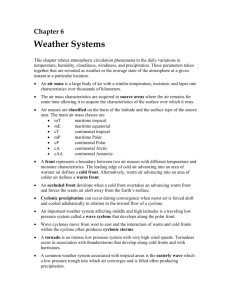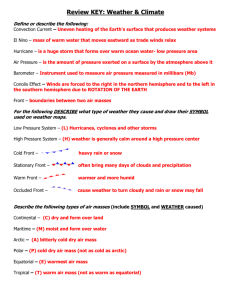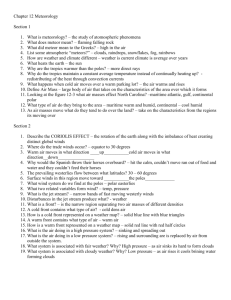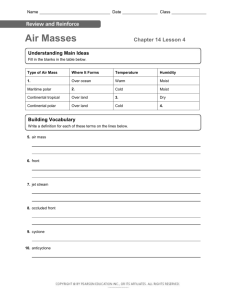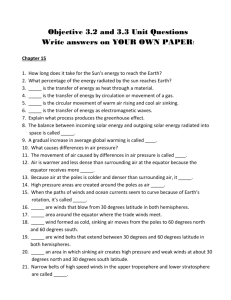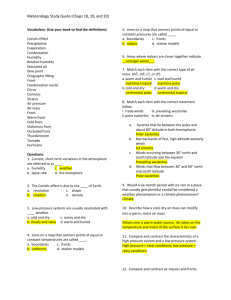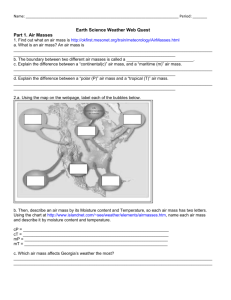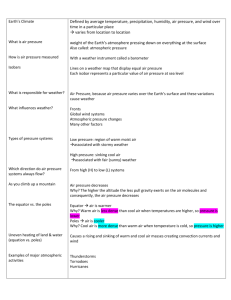7.E.1.3 Severe Storms & 7.E.1.5 Air Mass & Wind – Study Guide
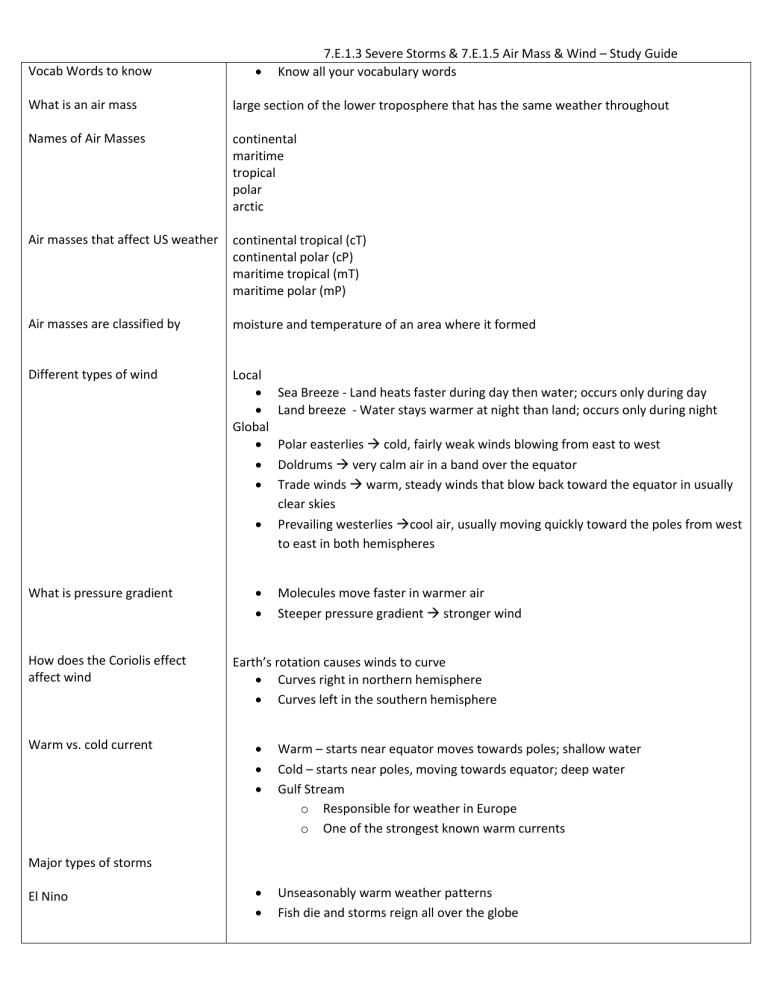
Vocab Words to know
What is an air mass
Names of Air Masses
Air masses that affect US weather
Air masses are classified by
Different types of wind
What is pressure gradient
How does the Coriolis effect affect wind
Warm vs. cold current
Major types of storms
El Nino
7.E.1.3 Severe Storms & 7.E.1.5 Air Mass & Wind – Study Guide
Know all your vocabulary words large section of the lower troposphere that has the same weather throughout continental maritime tropical polar arctic continental tropical (cT) continental polar (cP) maritime tropical (mT) maritime polar (mP) moisture and temperature of an area where it formed
Local
Sea Breeze - Land heats faster during day then water; occurs only during day
Land breeze - Water stays warmer at night than land; occurs only during night
Global
Polar easterlies cold, fairly weak winds blowing from east to west
Doldrums very calm air in a band over the equator
Trade winds warm, steady winds that blow back toward the equator in usually
clear skies
Prevailing westerlies
Unseasonably warm weather patterns
Fish die and storms reign all over the globe
cool air, usually moving quickly toward the poles from west to east in both hemispheres
Earth’s rotation causes winds to curve
Curves right in northern hemisphere
Curves left in the southern hemisphere
Molecules move faster in warmer air
Steeper pressure gradient stronger wind
Warm – starts near equator moves towards poles; shallow water
Cold – starts near poles, moving towards equator; deep water
Gulf Stream o o
Responsible for weather in Europe
One of the strongest known warm currents
3 causes of storms
Different types of precipitation
7.E.1.3 Severe Storms & 7.E.1.5 Air Mass & Wind – Study Guide
Heat of sun
Water in air
Spin of earth
Types of
Precipitation Description
Rain
Snow
Sleet
Freezing rain precpitation falling through only warm air precpitation falling through only cold air occurs when ice crystals begin to fall through warm air, encounter cold air at the surface and refreeze falls through mostly warm air, until it nears the ground where it encounters cold air and freezes again

